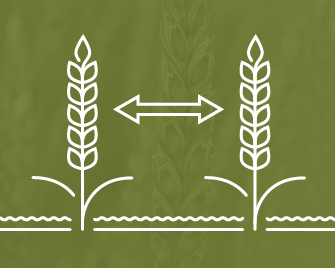AGCO AGRONOMY: MAXIMISING WINTER WHEAT YIELD
18th April 2024

The yield and operating costs associated with producing winter wheat can vary hugely based on some key variables; row spacing, seed rates and weed control regimes, comprising herbicide-free and conventional chemical. The AGCO Agronomy Team tackles all these factors and weighs them up, so you can take the best approach.
What they did
The study was carried out on the Swiss Future Farm in the 2021-2022 season. The trial plot was planted in an intensive tillage system after silage corn. Winter wheat was seeded on 20th October 2021 with a seed drill at either normal (12.5 cm) or wide (37.5 cm) row spacing, and full (100%) or reduced seed rate (60%). The other variable was whether chemical or mechanical weed control was used during growth. Except seeding and weed control, all field operations for seedbed preparation, fertilizer application and harvest were conducted uniformly across all trial strips. The trial was harvested on 25th July 2022.

What they found
1. The highest yield was achieved in wheat grown with normal row spacing and chemical weed control. In comparison, the other trials produced:
1.1. Normal row spacing and mechanical weed control - 5.5% less.
1.2. Wide row spacing with chemical weed control - 24.7% less.
1.3. Wide row spacing and mechanical weed control - 32.9% less.
2. Highest hectolitre weight was obtained from the trial strip with normal row spacing and mechanical weed control. All other row spacing and weed control treatments were on an equivalent, slightly lower level.
3. Protein content was significantly higher for winter wheat grown with wide row spacing, both under chemical and mechanical weed control.
What they concluded
Ear count results in BBCH stage 50-60 show that the targeted amount of 600 ears per square meter in winter wheat was only achieved in the normal row spacing treatment. This observation is in line with the results on grain yield, where normal row spacing and full seed rate provided significantly higher yield than wide row spacing, independent of the weed control method applied. Nevertheless, it should be noted that the wide row spacing plots with only 60% less seed rate resulted in only a 22% spike reduction (with chemical weed control) and 26% spike reduction (with mechanical weed control). Therefore, the wheat plants sown in wide row spacing showed more tillering.
Know other farmers who would benefit from this research? Share it with them.

